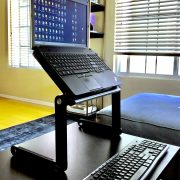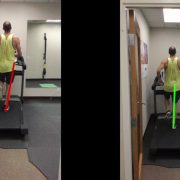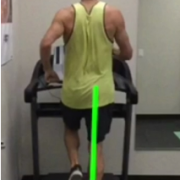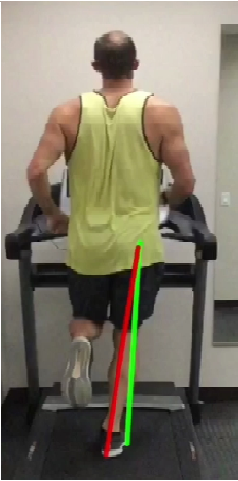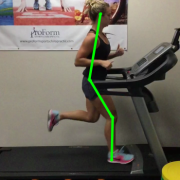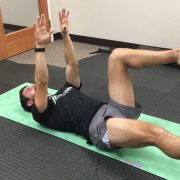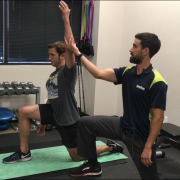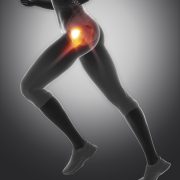Posts
Chiropractic Care for Headaches
/in Headaches, Tips/by adminChiropractic Care for Headaches | San Diego Chiropractic
Summary
- Chiropractors are trained to diagnose the type of headache you are experiencing
- They are trained in manual therapies designed to treat muscles and joints that are causing or worsening the headaches
- They will work with you to identify reasons to why the muscles and joints are causing headache symptoms
- If there is a need for a referral, chiropractors can make sure you are sent to the right physician
- Our chiropractic office for treating headaches is located near La Mesa, Mission Gorge, Kensington, Serra Mesa, Bay Park, and Clairemont Mesa
- The types of headaches we treat are migraines, tension headaches, cervicogenic headaches, posture related headaches, trigger point referral headaches
Does Chiropractic Care Help Headaches?
Does chiropractic care help headaches? Chiropractic care can help reduce and even fully eliminate headache symptoms. Many headaches are due to muscle imbalances, and/or joint injury to the upper back, neck, and head region.
What Are Common Causes of Headaches?
Headaches are often experienced after trauma to the head and neck. They can also begin the develop over time as a result of poor posture or repetitive strain (same movements during sport, sitting at a desk 40 hours a week). As repetitive stress continues, the muscles and joints become irritated and start referring pain to the head region.
Pain referral patterns of muscles?
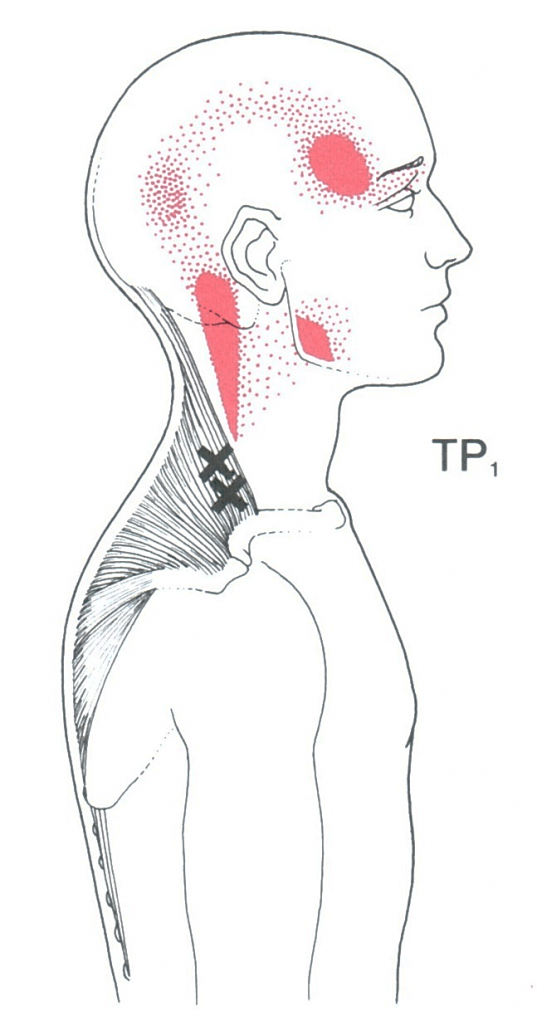
Upper Trapezius Trigger Point Referral
Acutely or chronically strained muscles can develop trigger points. Trigger points are hyper irritable fibers within a muscle unit that can cause local and referred pain. An active trigger point, actively causes pain. Example: pain in the muscles at the base of the skull with headache symptoms at eyeball area.
In this example, the muscle itself is sore and painful and is referring pain to the eyeball/forehead area. Another example is the upper trapezius muscle which connects the top of the shoulder to the neck. When that muscle develops a trigger point (often due to postural strain), headache symptoms can begin from the neck area up the side of the head, around the ear and to the temples. It looks like a question mark and headache symptoms can be felt anywhere along that path.
Ever tried rubbing your temples to get your headache to go away? Didn’t work? Try addressing the upper trapezius muscle which refers pain to the temples!
Pain Referral Patterns of the Joints
An inflamed and painful joint in the neck may also refer pain to various points of the neck, upper back, and head. Joints are normally injured through whiplash type injuries or quick movements without proper stabilization. Degenerative joints can also be a source of headache symptoms. As the joints wear down from past trauma and age, the degenerative joints compress the local tissues which then can refer pain.
There are plenty of referral patterns that result in headache symptoms. A chiropractor will evaluate the muscles and joints of the neck, shoulder, and upper back to identify the likely culprits. A proper referral will be made if the presenting symptoms are found to be outside of the musculoskeletal system.
Chiropractic Care for Common Headache Symptoms
In our San Diego based chiropractic office, we use a handful of therapies to treat common headache symptoms. Chiropractic adjustments or joint mobilization to the neck and upper back help restore motion to stiff, achy joints and relax local muscle tissues. Active Release Technique, and Graston Technique break down trigger points and tight muscles to eliminate muscular causes of headaches. Home exercises are then given to help combat headache symptoms and decrease the likelihood of the headaches returning.
Here is an example of how we treat a patient with neck and headache symptoms.
Why do the joints and muscles keep causing pain after treatment?
Many chiropractors, physical therapists, and other physical rehabilitation specialists claim they treat the “root cause” of your conditions. Many will treat the muscles and joints that cause the headaches as the “root cause”. Yes, that is treating what is causing the symptoms, but what is causing those muscles and joints to become irritated? Proper chiropractic care for headaches will also look at the entire picture. Here are a few likely causes for recurring headaches:
- Poor Posture
- Poor movement mechanics
- Diet
- Hydration
- Stress
- Sleep
Working working those categories, starting the most likely first, will identify the true cause of the headaches and eliminate them from returning!
Get Your Headaches Treated Today!
Our San Diego chiropractic team is trained to evaluate and treat your headaches. We are confident our chiropractic care for headaches will help reduce and even eliminate the frequency, intensity, and duration of the headaches you are experiencing. We are conveniently located in Mission Valley, San Diego near Ocean Beach, Pacific Beach, Normal Heights, and Hillcrest! Call or schedule online today!
Laptop Ergonomics | Recommendations
/in Ergonomics, Tips/by adminSome of the links in this post are affiliate links. We may earn an affiliate commission if you click on a link and purchase an item we recommend. This doesn’t add any additional cost to you, but helps support our business.
Laptop Ergonomics: General Recommendations
Proper laptop ergonomics is very important for musculoskeletal health. We live a rapidly progressing digital age. More and more jobs are now performed part or full time remotely. Many people find themselves working from a number of different places and therefore primarily use a laptop. Laptops are versatile and convenient; they also cause a high amount of physical strain on the body. It is very important to practice proper laptop ergonomics.
Laptops do not put a person’s body into a proper position. Due to the attached key board, small screen, and low height, most users find themselves with poor posture through their backs, neck, shoulders, and arms. At 40 to 80 hours per week, this will result in back, neck, shoulder, head, arm and wrist injury sooner or later. This article will discuss helpful recommendations for proper laptop ergonomics.
Laptop Stand
Goal: Raise laptop screen so eye level is in the upper half of screen when sitting/standing with upright posture.
Reason: Reduce Strain to upper back, shoulders, neck and head by promoting proper posture while working.
Equipment Recommendation: Adjustable Laptop Stand
One the most important elements for proper laptop ergonomics is to raise the laptop higher on the work surface. To accomplish this, use a laptop stand. We recommend a laptop stand that is foldable, light, and is adjustable to accommodate sitting and standing posture. The Adjustable Laptop Stand by Rhino Flex is a stand we recommend for patients who work at least part time from home.
We like this laptop stand for many different reasons. First, it is light and portable so it can be used on the go. You can set it up at home, coffee shops, office, you name it. Second, you can set it up to support a seated position and a standing position. For proper laptop ergonomics, having this ability is key to reduce strain to the body throughout the day. Finally, it has an adjustable leg system with measurements so you can quickly set it up and break it down between travel, seated, and standing positions; just remember the numbers!
Keyboard and Mouse
Goal: Keep arms closer to waist level and a slight downward bend at the elbow when screen is elevated.
Reason: Decrease strain to wrist, elbow, and shoulder.
Equipment: Logitech Bluetooth Keyboard and Mouse Combo
Most attached keyboards and mouse pads are again, terrible ergonomically. They often force your arms to work toward mid line and the mousing options (pad, stick, ball) are not as easy to use as a traditional mouse. Using a Bluetooth keyboard and mouse combo via a USB receiver on your laptop is the best way to go.
We recommend the Logitech Bluetooth Keyboard and Mouse Combo particularly when combined with a laptop stand. If you only use a laptop stand, then you will be forced to type like a T-Rex as the keyboard will be in front of your chest! This will eventually create issues with your arms, and posture. The mouse is a nice add on as the laptop mouse pads are not as efficient to use. Finally, having both the keyboard and mouse wireless is nice for on the go type of work and will help with proper positioning for your body.
Standing Mat
Goal: Improve cushioning on standing surface while offering different positions to stand in.
Reason: Decrease forces traveling up body from standing.
Equipment: Standing Desk Anti-Fatigue Mat
The last item that is recommended for proper laptop ergonomics is an anti-fatigue mat. Standing on firm surfaces for extended periods of time can cause discomfort to the main weight bearing joints of the body. We recommend a standing desk anti-fatigue mat
to help disperse the forces traveling up the body. This particular mat works well as it also offers several different shapes, angles to stand on to further vary your position throughout the workday.
An important reminder for standing desks, vary your standing and seated position throughout the day! Many people transition to a standing desk and then stand all day long in the same position. Try different foot positions when standing, and work seated periodically throughout the day. Variety is key for proper laptop ergonomics.
Laptop Ergonomics: Conclusion
The combination of the above recommendations along with frequent mini breaks during the workday can help a lot with overall strain to the body. It is important to be aware of these fixes early on in your career to keep your body in the best shape possible. If you are suffering from posture related neck, back, head, and shoulder pain, we are happy to help! Our San Diego Chiropractors are conveniently located in Mission Valley. We are located near Downtown, Point Loma, Hillcrest, North Park, South Park, Golden Hill, and La Mesa. Our clinic also offers acupuncture, massage, and personally training. We believe in a well rounded approach to help a patient take the proper steps to optimal health. Schedule online or call our office at 619-818-4306.
Running Analysis San Diego
/in running form, running injury, Sports Injury/by adminRunning Analysis San Diego
Case Study 1- Runner’s Knee
In this running analysis case study, we look at what is exacerbating our patient’s “runner’s knee”. He is a triathlete, who is new to the sport. The knee pain is worse following runs and hard efforts on the bike. Stretching, foam rolling, Active Release treatments seem to help but the pain always returns. He has never had a running analysis, so we put him on the treadmill to see what his running technique looks like. Watch the complete in depth running analysis below.
Additional Information
Before the running analysis, we performed a physical exam. Our patient is 6’3″ and weighs around 190 lbs. As mentioned in the video, he was found to have a slow cadence, over stride, and demonstrated a cross over gait. Those findings with a runner of his size can create a lot of impact force with each step. To reduce the strain in the knee, it is crucial to get his feet to land closer to his body. In his case, increasing cadence helped accomplish this. It is important to note however that not everybody will need to perform the same corrections to get the foot closer to the body. This is what makes a running analysis so valuable; each runner may need to work on different cues to accomplish the same goal.
Future Considerations
Watching the running analysis above, you may think “But he can work on this, and this, and this to help with his form too!”. I believe he can work on more cues and drills to help with his running form. BUT if you give a runner too many cues to work on immediately, they will likely get overwhelmed with the information and not properly execute the cues/drills. Further more, they will likely end up running very stiff, and out of sync making the runs feel terrible!
For these reasons, we will only give 1 to 2 cues/drills to work on at a time. We want our runners to ENJOY running while making beneficial changes to their running technique! So for our patients case, we recommend 4-8 weeks to start working on changing his technique. Then we perform a second running analysis to get a new baseline and then make further recommendations from there.
Schedule your running analysis today at www.peakformhealthcenter.com! Our running experts at Peak Form Health Center in Mission Valley, San Diego have worked with hundreds of runners. We are located near Hillcrest, Normal Heights, La Mesa, Ocean Beach, Point Loma, and Clairemont Mesa. Our exertise will get you back to running injury free and increase your performance!
Gait Analysis San Diego- Cross Over Gait
/in running form, running injury, Sports Injury/by adminGait Analysis San Diego- Cross Over Gait
A running gait analysis is very helpful when a runner is dealing with an injury. One of the more problematic gaits that we identify during our running gait analysis is a cross over gait. The cross over gait or tight rope gait is present when a runner steps across the position of the previous foot of the opposite leg. They run very narrow in a cross over gait and often appear very wobbly in their legs when running. Take a look at the picture of one of our triathletes below. He has been dealing with knee pain following runs and it was found he runs with a cross over gait.
Signs and Symptoms of a Cross Over Gait
Often times, runners are unaware that they run with this style of gait. The most common signs and symptoms of a cross over gait include:
- Posterior Shin Splints
- Plantar Fasciitis
- Knee pain
- Iliotibial Band Syndrome (IT Band Syndrome)
- Hip bursitis
- Low Back Pain
- Hitting legs together when running
- Excessive wearing on the outer part of the bottom of the shoe
- Generalized aches in the body after long runs
- Unable to pass a certain mileage per week without pain or injury
- Plateaus in performance, even with proper training
How to Identify a Cross Over Gait
To properly identify a cross over gait, a run gait analysis is a necessity. A run gait analysis will take a look at the runners run gait from several different views to see what form inefficiencies they are running with. Once the gait pattern is identified, gait cues/corrections are given. With dedication to drills and training, running gait changes will occur.
Can Shoes or Exercises Correct a Cross Over Gait?
Short answer is no. It does not matter what shoes are worn if you run with a cross over gait. You may notice some improvement with certain types of shoes but it will simply mask the underlying problem and prevent the real cure. Strengthening and stretching may also help manage symptoms of the cross over gait but will not fix the cause of the injury. Strengthening may allow the runner to run further each week but eventually, the tissues will max out and fall back into injury if the cross over gait is present. The only thing that helps get rid of a cross over gait is working on changing running form.
Treatment
Schedule a running gait analysis to get proper identification of what running form inefficiencies are causing your injury. Once they are identified, running cues and drills will be give to stat making permanent changes to your running form. Our running gait analysis is performed at our Mission Valley San Diego office. We are located near the neighborhoods of Pacific Beach, Ocean Beach, Normal Heights, Hillcrest, Serra Mesa, La Mesa, and Tierrasanta. Schedule online at www.peakformhealthcenter.com to get your running form evaluated today!
Running Gait Analysis San Diego
/in running form, running injury, Sports Injury/by adminRunning Gait Analysis San Diego
A running gait analysis helps identify common running form inefficiencies that may result in injury or at the very least decrease running performance. Our running gait analysis program in San Diego California takes a runner through multiple trials of treadmill running with video feedback. Based on the video analysis and other measurements during the running gait analysis, we can make recommendations for the runner to begin working on. We then do more rounds of video analysis to note the changes that occur with those initial running modifications. This step by step approach gives runners significant feedback to begin working on improving their running gait! Check out our brief video below to see our running gait analysis in action!
Running Gait Analysis Goals
With every runner, we have several goals in mind when performing the gait analysis. We aim to:
- Identify major running form inefficiencies
- Give patients running cues to start changing their running form
- Show patients before and after videos so they can visualize the changes
- Recommend drills and workouts to begin reinforcing those changes
With dedication from the runner, the running form changes will take permanent effect. These changes do not happen over night! Consistently performing the drills and running workouts will slowly make the changes over time. We recommend 6-8 weeks, working on the recommended changes before we do a follow up running gait analysis. This allows enough time to see how they effects have taken place.
A running gait analysis is the only tool that can identify and CORRECT running related inefficiencies. A common misconception is that if a runner works on strength training for certain muscle groups, they will improve their technique. While there are benefits to performing strength training, working on the recommended corrections DURING running is the only intervention that will improve running gait.
Our team of sports chiropractors are trained in using running gait analysis to help prevent and return from running related injury. We are certified by The Running Clinic as experts in running related injuries. Schedule today at www.peakformhealthcenter.com and come see us at our running clinic in Mission Valley, San Diego.
______________
Drs. Kevin and Travis Rose are chiropractors trained in managing sport related injuries. Both are avid runners and triathletes, having competed in numerous races from 5ks to the Ironman World Championships in Kona Hawaii.
Exercise to Combat Low back Pain in San Diego
/in Back Pain Prevention, Sports Injury/by adminLow back pain is a painful, frustrating, and sometimes disabling condition. There are many different causes of low back pain (Different Types of Low Back Pain) but there are similar characteristics among back pain conditions that can be addressed to help address it. Common risk factors that are associated with low back pain are: Tall stature, obesity, weak core musculature, muscle imbalances, prior back injury, family members with low back pain, improper lifting or exercises mechanics. In our chiropractic office in Mission Valley, San Diego, near Pacific Beach, Ocean Beach, Hillcrest, and North Park, we see many types of low back pain. Majority of the time we need to address the functionality of the core. Many patients who are experiencing low back pain often carry their low backs in a disengaged position which causes hyperextension and irritation of the joints of the low back. This hyperextended position is often due to inhibition (inability to control) of the core musculature. By addressing this inhibition, patients begin to learn proper “lumbopelvic” control and posture, meaning they are able to hold their back in a stable position during their daily activities. The following low back exercise for low back pain, called the dead bug, is an excellent drill to utilize to teach patients how to use their deeper core musculature which is important in getting patients out of low back pain. The more control that is developed in these muscles, the more stable the back will be and less prone to causing pain.
“Dead Bug” Core Exercise
Start by laying on the ground with the legs bent 90 degrees at the knee and above the hip. Now, there should be an arch in the lower back or in other words, some space between the ground and the low back. Press the low back in towards the ground; this engages the deep abdominal and spinal core muscles. If you have pain when pressing down, try rolling up a towel about 1″ thick and place that under the low back for support. Hold the core engaged and slowly straighten one leg toward the ground about 6″ from the ground and back; repeat on the other leg. It is important to keep the back pressed toward the ground to develop the lower abdominal strength. Repeat this exercise, 3 x 10 nice and slow! If you can’t make it to 10 before you fatigue and the back arches, then stop on whatever rep it is that you maintain proper back position. Check out the video below for more details for the “dead bug” exercise.
If you are having low back pain, please get a full evaluation before attempting any new exercise routine. Back pain is complex and not all exercises work for every type of low back pain. Get a proper diagnosis with one of our sports chiropractors today. We are conveniently located in Mission Valley, San Diego. We are near the neighborhoods of La Jolla, UTC, Poway, Scripps Ranch, and Normal Heights. We are experienced in treating all types of low back pain!
How to Perform an Effective Hip Flexor Stretch
/in Back Pain Prevention, Conditions, Sports Injury/by adminA Safe and Effective Hip Flexor Stretch
The main muscles that make up the “hip flexors” are the rectus femoris, iliacus, and psoas major. This muscle group can become overactive and tight resulting in a variety of musculoskeletal issues. Many people perform a hip flexor stretch as a routine, or to help with a specific condition: knee pain, hip pain, back pain. Unfortunately, we see many patients who are performing a hip flexor stretch incorrectly and are exacerbating their condition. Take back pain as an example. Tight hip flexors can cause abnormal posture through the low back resulting in joint compression and irritation. Many patients will then stretch the hip flexors aggressively to help alleviate the symptoms. However, in an effort to loosen up the hip flexors, patients are compromising their low back by compressing a twisting the joints. To stretch the hip flexors properly, there are a few cues that you want to pay close attention to. Take a look at the following video; we go through the proper set up and execution of a safe hip flexor stretch.
Now, if you search “Best hip flexor stretch” you will get thousands of results and some are going to look really cool, and effective. At our chiropractic office in Mission Valley, San Diego we strive for keeping the exercises simple, accessible, and effective. Many of the “cool” or “aggressive” hip flexor stretches often put patients into compromised positions for their condition. Try this version of the hip flexor stretch. If you are suffering from low back, knee, or hip pain, please schedule with us to get a full evaluation. We specialize in treating sports injuries and tight hip flexors are a common presentation we see in our athletes as well as our workforce patients. Our office, Peak Form Health Center, is conveniently located off Texas Street, in Mission Valley, San Diego.
Sciatica- Conservative Management San Diego
/in Conditions, Low Back Pain/by adminSciatica is a term that encompasses any condition that that can effect the sciatic nerve. Low back and hip injuries are the most common types of injuries that produce sciatica or sciatic symptoms. Less commonly, peripheral entrapment of the nerve around the hamstrings, and lower leg muscles cause sciatica symptoms in the back of the leg. Our San Diego chiropractor at Peak Form Health Center has treated countless conditions that cause sciatica symptoms.
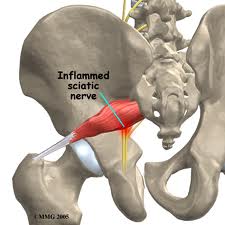
What causes Sciatic Symptoms?
The sciatic nerve is made up of many different nerve roots from the low back and sacrum (tail bone). The nerve roots are extensions from the spinal cord that exit the spine to form peripheral nerves (ex: sciatic nerve is a peripheral nerve). If you have a back injury like a disc bulge, the disc bulge can press on the exiting nerve root which causes nerve irritation. Nerve irritation symptoms can cause numbness, tingling, hot/cold sensations, shooting pain, loss of sensation, and/or loss of function to the muscles that nerve innervates. Those same symptoms are what are described as “sciatica” but typically patients refer to sharp shooting pain as sciatica. Other conditions that can cause sciatica are:
- Low back injury- See our post on types of low back pain here: Different Types of Low Back Pain
- Disc bulge
- Disc herniation
- Piriformis syndrome– see our thorough blog post on piriformis syndrome here: Piriformis Syndrome: Overview and Causes Piriformis Syndrome Part II- Evaluation Piriformis Syndrome Part III- Treatment
- Degenerative Disc Disease
- Degenerative Joint Disease
- Foraminal stenosis of the lumbar spine (Bone Spurring)
- Central canal stenosis
- Sciatic nerve entrapment
- Spondylolisthesis
In rare but serious cases, sciatic symptoms may be due to: tumors, infection, tethered spinal cord, and other neurological conditions.
Conservative Management for Sciatica
First and foremost, a proper diagnosis is required to treat your symptoms effectively. Depending on what the cause is and how long it has been going on, usually a combination of manual therapy, specific exercise protocols, and home education can help resolve sciatica. Let’s take piriformis syndrome as an example. In piriformis syndrome, the piriformis muscles compresses the sciatic nerve. To treat this, targeted Active Release Techique and other myofascial release techniques often results in drastic improvement of symptoms. If however, the sciatica is due to a low back condition, manual therapy to the piriformis muscle will likely not result in significant relief of symptoms.
To reiterate the first point, it is important to see a sports chiropractor or sports medicine professional who will accurately diagnose what is causing the sciatica. Many times we see patients who have been dealing with sciatic symptoms for months and have been doing self treatments that are actually perpetuating their symptoms. Be very wary of a “do this one thing for your sciatica.” type blog post as it may be causing more harm than good.
Our San Diego based chiropractic group treats many different causes of sciatic symptoms. If there is ever concern of a more serious condition causing sciatica, or further investigation is required, we will make an appropriate referral to get the best care for you. Schedule today to get a thorough evaluation. Our office is conveniently located in Mission Valley, San Diego.
IT Band Syndrome: 5 Training Tips
/in Knee Pain, running form, running injury/by adminTrying to run with IT band syndrome is very frustrating. Often times, a runner can run with IT band syndrome for a certain amount of time until the pain comes back or becomes so unbearable that they have to limp home from their run. Our chiropractors treat runners who run with IT band syndrome as well as other running related injuries.
Top 5 training tips for IT Band Syndrome
Decrease volume– IT band syndrome is worse with a high number of repetitions. When you run with IT band syndrome, try reducing your volume by 50% to start off.
Avoid down hill running– Down hill running causes more force into the quadriceps and less activation from the glutes. The glutes play a very important role in knee stability. Without proper glute activation, a run with IT band syndrome through hills will make things worse. Stick to flat surfaces.
Increase intensity– Volume is the main issue when dealing with It band syndrome. With the decreased run volume, it is ok to get more out of those shorter workouts. Adding some intensity will help keep fitness levels high for training.
Run/Walk- This technique will help you keep the repetitions low. If you have tried to run with IT band syndrome for a long time without success, this option may be a good way to start back into running.
Uneven Surface running– Running on concrete or other flat surfaces hits the same muscles in the same direction over and over. If you run on a trail that has varying terrain (and limited ups and downs) this will cause the hip muscles to work more in different orientations. This will help build overall strength to support the hip and the knee.
These tips can help manage and allow you to run until the symptoms improve and you are pain free. These training modifications combined with manual therapy and exercise like our running chiropractors in San Diego perform, can help get you out of pain even faster. Our office is conveniently located in Mission Valley, San Diego.
Both Dr. Travis Rose, DC CCSP and Dr. Kevin Rose DC DACBSP are avid triathletes and runners. As experienced triathletes, Dr. Travis and Kevin Rose understand the frustrations of running injuries and try their absolute best to get you better, faster!
PEAK FORM NEWSLETTER SIGN UP
Our Office



